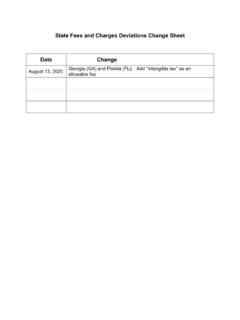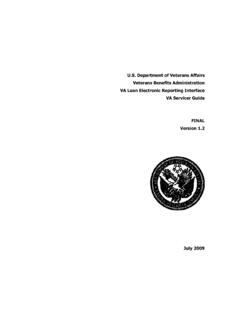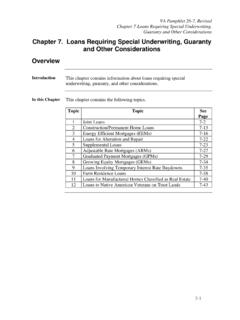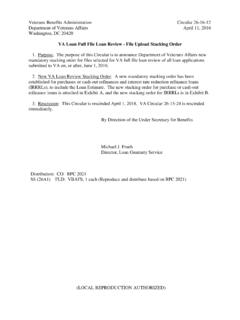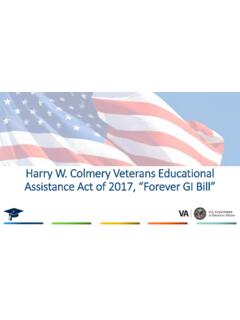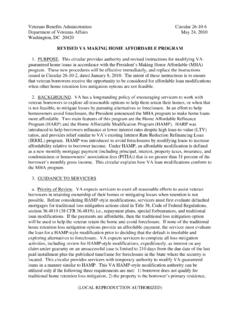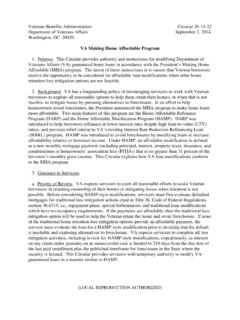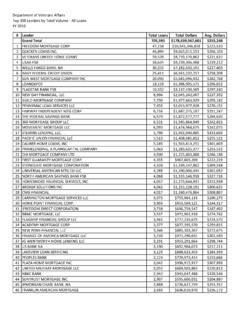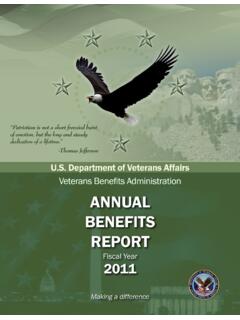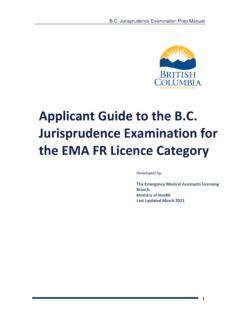Transcription of RESPIRATORY CONDITIONS (OTHER THAN …
1 Page 1 of 8 Updated on: March 31, 2020 ~v20_1 RESPIRATORY CONDITIONS Disability Benefits Questionnaire Released January 2022 RESPIRATORY CONDITIONS ( other than TUBERCULOSIS AND SLEEP APNEA) DISABILITY BENEFITS QUESTIONNAIRENAME OF PATIENT/VETERANPATIENT/VETERAN'S SOCIAL SECURITY NUMBERNote - The Veteran is applying to the Department of Veterans Affairs (VA) for disability benefits. VA will consider the information you provide on this questionnaire as part of their evaluation in processing the Veteran's claim. VA may obtain additional medical information, including an examination, if necessary, to complete VA's review of the veteran's application. VA reserves the right to confirm the authenticity of ALL Questionnaires completed by providers. It is intended that this questionnaire will be completed by the Veteran's - THE DEPARTMENT OF VETERANS AFFAIRS (VA) WILL NOT PAY OR REIMBURSE ANY EXPENSES OR COST INCURRED IN THE PROCESS OF COMPLETING AND/OR SUBMITTING THIS FORM.
2 Are you completing this Disability Benefits Questionnaire at the request of:Veteran/ClaimantOther, please describe:Was the Veteran examined in person? Is the Veteran regularly seen as a patient in your clinic? Are you a VA Healthcare provider?If no, how was the examination conducted?No records were reviewedRecords reviewedEvidence reviewed:EVIDENCE REVIEWP lease identify the evidence reviewed ( service treatment records, VA treatment records, private treatment records) and the date 2 of 8 Updated on: March 31, 2020 ~v20_1 RESPIRATORY CONDITIONS Disability Benefits Questionnaire Released January 20221B. SELECT THE VETERAN'S CONDITION (Check all that apply):(If "Yes," complete Item 1B)1C. IF THERE ARE ADDITIONAL DIAGNOSES THAT PERTAIN TO RESPIRATORY CONDITIONS , LIST USING ABOVE FORMAT:1A. DOES THE VETERAN NOW HAVE OR HAS HE OR SHE EVER BEEN DIAGNOSED WITH A RESPIRATORY CONDITION? (This is the condition the veteran is claiming or for which an exam has been requested.)
3 NOYESCHRONIC OBSTRUCTIVE PULMONARY DISEASE (COPD)NOTE - If diagnosed with Sleep Apnea and/or Narcolepsy complete the Sleep Apnea and/or Narcolepsy Questionnaire(s), in lieu of this - Restrictive lung diseases include but are not limited to diaphragm paralysis or paresis, spinal cord injury with RESPIRATORY insufficiency, kyphoscoliosis, pectus excavatum, pectus carinatum, traumatic chest wall defect, pneumothorax, hernia, etc., post-surgical residual (lobectomy, pneumonectomy, etc.), chronic pleural effusion or LUNG DISEASE (If checked, specify):EMPHYSEMANOTE - Interstitial lung diseases include but are not limited to asbestosis, diffuse interstitial fibrosis, interstitial pneumonitis, fibrosing alveolitis, desquamative interstitial pneumonitis, pulmonary alveolar proteinosis, eosinophilic granuloma of lung, drug-induced pulmonary pneumonitis and fibrosis, radiation-induced pulmonary pneumonitis and fibrosis, hypersensitivity pneumonitis (extrinsic allergic alveolitis) and pneumoconiosis such as silicosis, anthracosis, etc.
4 ICD code:ICD code:ICD code:ICD code:ICD code:ICD code:Date of diagnosis:Date of diagnosis:ICD code:Date of diagnosis:Date of diagnosis:ICD code:Date of diagnosis:Date of diagnosis:ICD code:Date of diagnosis:Date of diagnosis:ICD code:Date of diagnosis:Date of diagnosis:ICD code:Date of diagnosis:BENIGN OR MALIGNANT NEOPLASM OR METASTASES OF RESPIRATORY SYSTEM (If checked, specify): other DIAGNOSIS (If checked, specify):CHRONIC BRONCHITISCONSTRICTIVE BRONCHIOLITISINTERSTITIAL LUNG DISEASE (If checked, specify):SARCOIDOSISASTHMAPULMONARY VASCULAR DISEASE (Including pulmonary thromboembolism) (If checked, specify):SECTION I - DIAGNOSISNOTE - Mycotic lung diseases include but are not limited to histoplasmosis, blastomycosis, cryptococosis, aspergillosis, or mucomycosis. MYCOTIC LUNG DISEASE (If checked, specify):ICD code:Date of diagnosis:PLEURISY WITH EMPYEMA, WITH OR WITHOUT PLEUROCUTANEOUS FISTULA UnresolvedResolvedICD code:Date of diagnosis:Page 3 of 8 Updated on: March 31, 2020 ~v20_1 RESPIRATORY CONDITIONS Disability Benefits Questionnaire Released January 20222B.
5 DOES THE VETERAN'S RESPIRATORY CONDITION REQUIRE THE USE OF ORAL OR PARENTERAL CORTICOSTEROID MEDICATIONS?(If, "Yes," check all that apply):YESNOSECTION II - MEDICAL HISTORY2D. DOES THE VETERAN'S RESPIRATORY CONDITION REQUIRE THE USE OF ORAL BRONCHODILATORS?Inhalational anti-inflammatory medicationInhalational bronchodilator therapy(If the veteran has more than one RESPIRATORY condition, indicate the condition which is predominantly responsible for the need for inhaled medications):YESNO2E. DOES THE VETERAN'S RESPIRATORY CONDITION REQUIRE THE USE OF ANTIBIOTICS?2F. DOES THE VETERAN REQUIRE OUTPATIENT OXYGEN THERAPY FOR HIS OR HER RESPIRATORY CONDITION?2C. DOES THE VETERAN'S RESPIRATORY CONDITION REQUIRE THE USE OF INHALED MEDICATIONS?(If checked, indicate number of courses or bursts in past 12 months):SECTION III - PULMONARY CONDITIONSO ther inhaled medications, describe:2A. DESCRIBE THE HISTORY (including onset and course) OF THE VETERAN'S RESPIRATORY CONDITION (brief summary): other , describe:(If "Yes," list antibiotics, dose, frequency and condition for which antibiotics are prescribed):(If "Yes," does the veteran require continuous oxygen therapy (>17 hours/day)?)
6 :(If "No," proceed to Section IV) (If "Yes," check all that apply):(If the veteran has more than one RESPIRATORY condition, indicate the condition which is predominantly responsible for the requirement for oxygen therapy):YESB ronchiectasisPulmonary embolism and related diseasesMycotic lung infectionGunshot/fragment woundRespiratory failureTumors or neoplasmsOther pulmonary CONDITIONS , pertinent physical findings or scars due to pulmonary CONDITIONS :Cardiopulmonary complicationsPneumothoraxBacterial lung infectionSarcoidosisNOYESA sthma(If checked, complete Part A below)(If checked, complete Part B below)(If checked, complete Part C below)(If checked, complete Part D below)(If checked, complete Part E below)(If checked, complete Part F below)(If checked, complete Part G below)(If checked, complete Part H below)(If checked, complete Part I below)(If checked, complete Part J below)(If checked, complete Part K below)(If checked, complete Part L below)NORequires systemic (oral or parenteral) high dose (therapeutic) corticosteroids for controlRequires daily use of systemic (oral or parenteral) immuno-suppressive medicationsRequires intermittent courses or bursts of systemic (oral or parenteral) corticosteroids(If "Yes," complete the following).
7 YESNOR equires chronic low dose (maintenance) corticosteroids(If the veteran has more than one RESPIRATORY condition, indicate the condition which is predominantly responsible for the need for corticosteroids or immuno-suppressive medications):YESNOYESNO(If "Yes," indicate frequency):Daily(If "Yes," indicate frequency):Intermittent DailyIntermittent (If "Yes," indicate frequency):Intermittent Daily1034 or more23. DOES THE VETERAN HAVE ANY OF THE FOLLOWING PULMONARY CONDITIONS ?Requires daily use of systemic (oral or parenteral) high dose corticosteroids Page 4 of 8 Updated on: March 31, 2020 ~v20_1 RESPIRATORY CONDITIONS Disability Benefits Questionnaire Released January 20222A. INDICATE ANY FINDINGS, SIGNS AND SYMPTOMS THAT ARE ATTRIBUTABLE TO BRONCHIECTASIS:Persistent symptoms (If checked, describe):3A. DOES THE VETERAN HAVE ANY FINDINGS, SIGNS OR SYMPTOMS ATTRIBUTABLE TO SARCOIDOSIS?(If, "Yes," check all that apply):Acute infection(If checked, indicate number of infections requiring a prolonged course of antibiotics (lasting 4 to 6 weeks) in the past 12 months):Productive cough (If checked, indicate frequency and severity of productive cough (check all that apply)):Frank hemoptysis (If checked, describe):(NOTE: For VA purposes, an incapacitating episode is a period of acute symptoms severe enough to require prescribed bed rest and treatment by a physician)Requiring a course of antibiotics at least twice a yearNear constantYESNOYESNOYESNOO ther, describe:Purulent sputum at timesOther, describe:DailyAnorexia (If checked, describe): Weight loss (If checked, provide baseline weight:PART B - BRONCHIECTASISPART A - ASTHMA2B.)
8 HAS THE VETERAN HAD ANY INCAPACITATING EPISODES OF INFECTION DUE TO BRONCHIECTASIS?(Note - For VA purposes, baseline weight is the average weight for 2-year period preceding onset of disease)(If "Yes," indicate average number of asthma attacks with episodes of RESPIRATORY failure per week in past 12 months):(If "Yes," describe frequency and severity of exacerbations):(Indicate frequency of physician visits for required care of exacerbations over past 12 months):At least 6 weeks or more1034 or more2 Progressive pulmonary disease (If checked, describe):No symptomsWeight loss (If checked, provide baseline weight:Night sweats (If checked, describe): other , describe:No physiologic impairmentCardiac involvement with congestive heart failure(NOTE: For VA purposes, baseline weight is the average weight for a 2-year period preceding onset of disease)Fever (If checked, describe):PART C - SCARCOIDOSIS(If "Yes," indicate total duration of incapacitating episodes of infection in past 12 months).)
9 YESNOC hronic hilar adenopathyPulmonary involvementStable lung infiltratesIntermittent0 to no more than 2 weeks2 to no more than 4 weeks4 to no more than 6 weeksand current weight:)and current weight:)SECTION III - PULMONARY CONDITIONS (Continued)4 or more3210 Less frequently than monthlyAt least monthly1A. HAS THE VETERAN HAD ANY ASTHMA ATTACKS WITH EPISODES OF RESPIRATORY FAILURE IN THE PAST 12 MONTHS?1B. HAS THE VETERAN HAD ANY PHYSICIAN VISITS FOR REQUIRED CARE OF EXACERBATIONS?Blood-tinged sputum at timesRequiring a prolonged course of antibiotics (lasting 4 to 6 weeks) more than twice a yearRequiring antibiotic usage almost continuouslyPage 5 of 8 Updated on: March 31, 2020 ~v20_1 RESPIRATORY CONDITIONS Disability Benefits Questionnaire Released January 2022 PART D - PULMONARY EMBOLISM AND RELATED DISEASESPART E - BACTERIAL LUNG INFECTIONPART G - PNEUMOTHORAXPART F - MYCOTIC LUNG DISEASESF ollowing inferior vena cava surgery Pulmonary hypertension secondary to other obstructive disease of pulmonary arteries or veins Chronic pulmonary thromboembolism Asymptomatic, following resolution of pulmonary thromboembolismOther, describe:Chronic pulmonary thromboembolism requiring anticoagulant therapySymptomatic, following resolution of acute pulmonary embolismPART C - SARCOIDOSIS (Continued)3B.
10 INDICATE STAGE DIAGNOSED BY X-RAY FINDINGS:3C. DOES THE VETERAN HAVE OPTHALMOLOGIC, RENAL, CARDIAC, NEUROLOGIC, OR other ORGAN SYSTEM INVOLVEMENT DUE TO SARCOIDOSIS?4. SELECT THE STATEMENT(S) THAT BEST DESCRIBE THE VETERAN'S PULMONARY VASCULAR DISEASE OR PULMONARY EMBOLISM CONDITION(Check all that apply):Stage 1: Bihilar lymphadenopathyStage 2: Bihilar lymphadenopathy and reticulonodular infiltratesStage 4: Fibrocystic sarcoidosis typically with upward hilar retraction, cystic and bullous changesStage 3: Bilateral pulmonary infiltratesNOYES(If "Yes," also complete appropriate additional Questionnaires)(If "Yes," check all that apply):NONocardiosis5C. DOES THE VETERAN HAVE ANY FINDINGS, SIGNS AND SYMPTOMS ATTRIBUTABLE TO A BACTERIAL INFECTION OF THE LUNG OR CHRONIC LUNG ABSCESS?5A. IDENTIFY TYPE OF BACTERIAL LUNG INFECTION:YESW eight loss (If checked, provide baseline weight:ActinomycosisOther, describe:HemoptysisNight sweatsFever(NOTE: For VA purposes, baseline weight is the average weight for 2-year period preceding onset of disease) other , describe:)and current weight:)and current weight:6.

